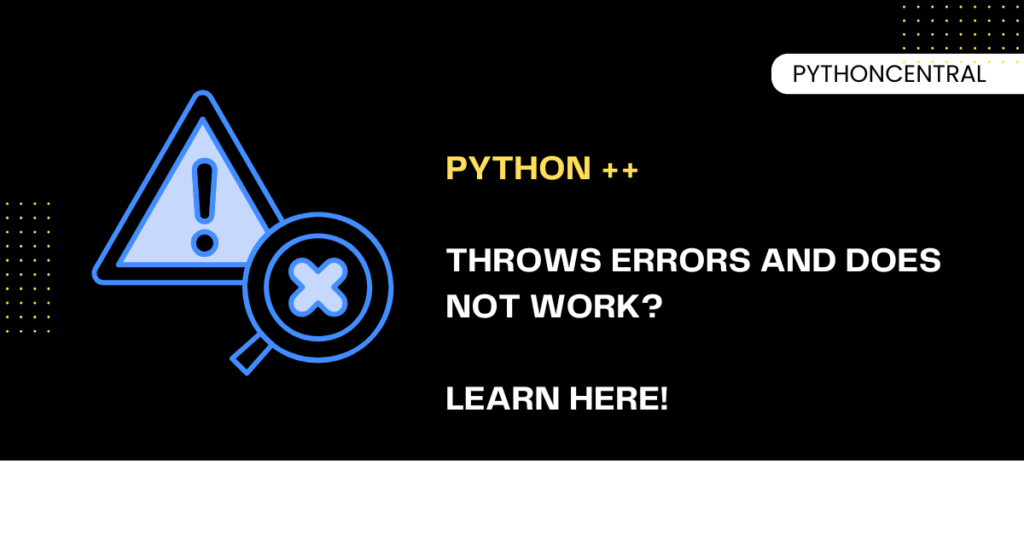If you have ever used languages like C, C++, or Java, you might have seen the classic increment operators: "++" and "--". They are the common operators for quickly increasing or decreasing values by one. However, if you do the same in Python, like using "i++" in a Python program, you will see an error.
Today at PythonCentral, let us explain everything there is about python ++, explain why it doesn't work as expected, and show you Pythonic alternatives. Whether you're a beginner learning the basics or a veteran brushing up your skills, understanding this nuance is essential. Get. Set. Learn!
Can You Use ++ in Python?
In a single word: No.
Python does not support the "++" or "--" operators you find in C-like languages. Let us understand with an example. If you write:
i = 5 i++ print(i)
You won't get a syntax error. But you also won't increment "i". Instead, "i++" is interpreted as two consecutive unary plus operators:
i = +(+(i))
Thus, "i" remains unchanged. The same is true for "--i", which would simply leave the value unchanged too.
Why Does Python Not Support ++?
Python emphasizes readability over clever syntax. The philosophy, guided by "The Zen of Python" (accessible via "import this") promotes clear, predictable behaviour. Implicit side effects from operators like "++" are intentionally discouraged.
In short, Python does not support == for these two reasons:
- Explicit is better than implicit.
- ++ can lead to confusion, especially for beginners.
How to Increment Variables Properly in Python
There must be a Python alternative for ++, right? There is. The correct Pythonic way to increment a variable is simple:
i = 5 i = i + 1
To be more concise:
i += 1
Here, "+=" is the augmented assignment operator. It modifies "i" by adding 1 to it. You can use "+=" for other data types too! It works on strings, lists, and more. Here is an example to understand better:
message = "Hello" message += " From PythonCentral" print(message) # Output will be: Hello From PythonCentral
Some Practical Examples of Incrementing in Python
Let us learn about incrementing with some practical examples.
Basic Counting Loop
Let us look at a script for basic counting loop:
count = 0 while count < 5: print(count) count += 1
See how we used the increment operator here?
Using "for" Loops
Python developers usually do not need manual increments because the "for" loop handles it naturally. Here is an example:
for i in range(5): print(i)
Here, "i" automatically increments on each iteration.
Fun Project: How to Create a Custom Increment Function
Just to play around, think like this: Can I simulate a "++"? We can do that by defining a function.
def increment(x): return x + 1 i = 5 i = increment(i) print(i) # 6
Does PythonCentral recommend this? No. Why? Because it unnecessarily complicates your script and in professional setups, it just adds to the overhead.
Common Errors to Be Aware Of
Here are some common errors you should be aware of:
- Do not use "i++" or "++i". It does not have an increment effect. Always use "i += 1".
- Do not expect automatic value changes because Python is explicit and nothing happens magically. Always reassign manually.
- Do not assume that "++i`"== "+(+i)". C's style of code does not work here.
As a best practice, try to use "for" loops with "range()" when you iterate numbers. Prefer readability over clever tricks. Remember the core philosophy: simple is better than complex.
Wrapping Up
The python ++ is a misconception when C programmers start learning Python. It is a classic mistake for newcomers making the move from C-like languages. Python chooses clarity over tricks, and that is part of the reasons why it is easy to learn. When you need to increment a number, just use "i += 1", and prefer explicit and readable style.

